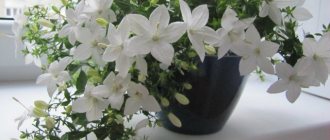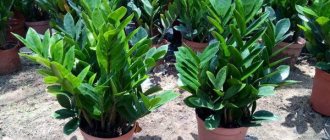Guzmania is a spectacular and bright plant, despite its not very sonorous “name”. By the way, this indoor flower received its name in honor of the discoverer, a Spaniard named Guzman.
This 19th century biologist discovered an unusual flower in the American tropics, was fascinated by its bloom and decided to try to move the find closer to people.
Now Guzmania decorates not only summer gardens and famous flower beds, but also home window sills. And people who often grow such plants began to notice its positive effect on their well-being and home environment. Thus, over the years of its presence next to people, guzmania has already managed to gain popularity and has become “overgrown” with signs and superstitions.
Guzmania flower: signs and superstitions that it brings into the house
Guzmania is a spectacular and bright plant, despite its not very sonorous “name”. By the way, this indoor flower received its name in honor of the discoverer, a Spaniard named Guzman.
This 19th century biologist discovered an unusual flower in the American tropics, was fascinated by its bloom and decided to try to move the find closer to people.
Now Guzmania decorates not only summer gardens and famous flower beds, but also home window sills. And people who often grow such plants began to notice its positive effect on their well-being and home environment. Thus, over the years of its presence next to people, guzmania has already managed to gain popularity and has become “overgrown” with signs and superstitions.
Signs and superstitions about Guzmania
Bright red, light yellow, orange and scarlet flowers have won many hearts of flower growers. The unusual shape of the flower, like the top of a pineapple (by the way, in the plant world it is a close relative of the gusmania), its brightness and unusualness charges with positive emotions for the whole day. And this is not the only sign that Guzmania has been awarded.
In the homeland of the flower, it is believed that the plant gives strength to the male sex - not only physically and emotionally, but also in the love sphere. Therefore, it would be nice to have such a plant at home and place it, for example, in the bedroom.
Depression, stress and troubles take a lot of mental strength. It is believed that guzmania is able to relieve tension in the owners, gives a charge of positive emotions and brings them to their senses.
According to signs, guzmania helps to cope with insomnia and nightmares. Its energy acts exactly like a mild sedative.
Superstitions also say that gusmania may well rival the “effect” of the money tree: the plant brings wealth to the house and improves the financial situation of the owners.
Acting as an antidepressant and assistant in absolutely all areas of life, guzmania is able to establish harmony in the house and prolong the life of its owners.
Types of Guzmania with photos and names
Guzmania reedulata
In indoor conditions, guzmania reed is most often cultivated - this is a flower that can grow as an epiphyte and as an epilith (on rocky soil). The base of such a plant is a rosette, consisting of long and dense leaf plates of a wide-linear shape and green color; in the middle it has a corolla of saturated-colored bracts. Such a corolla can be confused with a flower. Real flowers are part of the spike-shaped inflorescence, but they do not have any decorative value, and the flowering does not last very long. This type has several varieties:
- Purple (var. cardinalis) . The spreading rosette consists of green leaf plates, the width of which is 30–40 mm. The inflorescence has a red, scarlet or purple color. The inflorescence is multi-flowered. Flowering is observed in March and September.
- Modest color (var. concolor) . The rosette consists of greenish leaf plates. The pale orange bracts have deeper colored tips.
- Fiery (var. flammea) . The rosette consists of green leaf plates, the length of which is from 24 to 34 centimeters, and the width is from 1 to 2 centimeters, they are directed in all directions of the upper hemisphere. The bracts directed towards the zenith are painted in a fiery red hue. Flowering is observed in July and August, and small-flowered inflorescences are formed.
- Regular (var. lingulata) . The socket consists of sheet plates 25 mm wide. The color of erect bracts is pink or red. Flowering occurs in March, August and December.
- Small (var. minor) . The rosette consists of leaf plates of green-red or green color, the width of which is about 25 mm. Bracts of red or lemon-yellow leaf blades can be spreading or erect.
Guzmania Donnell-Smith
It has a loose rosette consisting of green leaf plates with scales of a paler shade. On an erect peduncle, a short pyramidal-paniculate inflorescence is formed, which at the base is covered with imbricated bracts of a deep red color. Flowering is observed in April and May.
Guzmania blood red
The goblet-shaped rosette consists of wide-linear leaf plates. The deep red bracts are thin. The corymbose inflorescence has a leaf-shaped involucre, its peduncle is undeveloped, so it is immersed in a leaf rosette. This type has several varieties:
- Bloody (var. Sanguinea) . The bracts are rounded with a sharp tip. The flowers are white or greenish-yellow. Flowering is observed in April and August.
- Short-legged (var. Brevipedicellata) . The pointed bracts are helmet-shaped.
Guzmania musaica, or mosaic
A spreading rosette is formed from long leaf plates. On the straight peduncle there are pointed broadly elliptical stipules of a deep pink color. A simple capitate inflorescence consists of 20 yellowish-white flowers, its base hidden by stipules. This species has varieties such as:
- Musaica - greenish leaf plates striated with irregular lines, flowering is observed in June and September;
- Concolor - single-color foliage;
- Zebrina - the foliage has wide stripes.
Nicaraguan Guzmania (Guzmania Nicaraguensi)
The bush has tongue-like foliage, which tapers towards the top; along the lower part it is covered with faded dense scales, which disappear over time. Instead of scales, small longitudinal red streaks form on the foliage. The leaf rosette has a goblet shape; a spindle-shaped simple inflorescence is immersed in it, on which not many yellow flowers grow. Flowering is observed in March and May.
Guzmania monostachia
The rosette includes a large number of greenish-yellow leaf plates, while those located below are more faded than those at the top, and on their surface in some places there is a coating consisting of small dotted scales, which fly off over time. At the top of the bare peduncle grows an elongated multi-row spike consisting of white flowers. Sterile flowers have white or deep red bracts, while fruit-forming flowers have faded bracts with brown longitudinal marks. There are the following varieties:
- Monostachia - leaf blades are monochromatic, faded bracts have longitudinal chocolate-colored streaks, flowering is observed in June and July;
- Variegata - there are white streaks on the green leaf blades;
- Alba - solid green foliage, upper bracts are white, and lower ones are also green.
What guzmania brings to the house
Many gardeners are sure that the benefits of this tropical plant are enormous. But there are also skeptics who find not very good features in the action of the flower. Fortunately, there are not many of them. So what does the guzmania flower bring into the home?
- Purifies the air and disinfects. The substances that gusmania releases during flowering have bactericidal properties that rid the surrounding area of microbes, including pathogens.
- It gives aesthetic pleasure, although guzmania blooms only once in its life, but throughout the fall and until spring.
- Brings harmony to the family, creates a positive aura at home.
- Activates male power.
- Develops creativity and gives inspiration to household members.
- Attracts financial well-being.
- According to legends, among greedy and evil people, the positive properties of the flower do not work at full strength or are completely lost. It happens that all the shortcomings of the owners are doubly amplified.
- According to signs, guzmania can attract uninvited guests into the house.
- If the aura of the home is not to the plant’s liking, guzmania can influence household members in such a way that they think about moving or decide to rearrange the interior by changing the interior.
- Allergy sufferers may experience exacerbations, malaise and drowsiness during gusmania flowering.
Diseases and pests of Guzmania, methods of combating them
Although guzmania can withstand unfavorable environmental conditions quite steadfastly, it is susceptible to infection by a variety of pests.
- Its main enemies are scale insects, spider mites, and mealybugs. They live on leaves and damage them. To treat, you need to wipe the plant with a sponge, after soaking it in a soap solution. If this does not help, then extreme measures are needed - the use of insecticides that are sprayed or poured into an outlet.
- If you see that the stem has begun to rot , then most likely the root system has rotted. To do this, you need to moderate watering.
- Gray spots on the leaves are a sure sign of fungus. A fungicide solution helps get rid of it.
Is it possible to keep a flower at home and where to put it according to Feng Shui
Knowing about the positive qualities of the flower, taking into account its unusual exotic appearance, we can conclude that it is definitely worth having at least one pot of guzmania at home.
Followers of the eastern practice of feng shui have even studied the places in the house where guzmania feels especially good, which means it will exude all its positive qualities with greater force.
The bedroom is a great place for a potted plant. Guzmania, as a source of male power, will improve love relationships between spouses, add romance and passion. According to Feng Shui, it is better to place two pots with a plant in the bedroom - as a symbol of pairing. And it’s better on both sides, opposite each other.
Feng Shui experts also believe that Guzmania will look harmonious in the southwestern part of the apartment (the zone of marriage and love), as well as in the east (responsible for health and development). It is advisable to place bright red Guzmania flowers in these areas - this will attract positive energy and relieve depression and despondency.
If you place any other “green friend” next to the guzmania plant, such a duet will help the owners grow in the professional field.
Alternative view
Guzmania or guzmania is an evergreen shrub with bright green foliage and red, yellow or orange plumes, which came to us from the tropics of Central and South America. The unusual name comes from the name of the famous botanist and traveler Anastasio Guzman, who first spoke about it. Being a close relative of the pineapple, it is popularly called “male flower” as a symbol of male activity and longevity. They say that it is precisely where the male half of humanity lives that the plant feels especially good.
Guzmania has long been bred not only in gardens and greenhouses, but also at home in ordinary flower pots. Before buying a plant for home, it would be good to find out what it is, how it affects the energy of residents and the house, and what kind of care it requires.
—
Popular signs and superstitions about Guzmania
A beautiful and succulent plant with bright flowers attracts gardeners with its appearance, but this is not the only reason why it is popular.
Guzmania Hole.
Here are just a few well-known signs and superstitions that tell about the plant, and whether to believe in them or not is everyone’s business.
In the world of flora, guzmania is called a male flower for a reason. They say that it is able to charge with energy, give activity, and even activate the love power of the stronger sex.
Advice! Flower growers recommend placing a pot with this flower on the windowsill in the room where couples in love sleep.
It is believed that guzmania can help cope with depression, gives strength, and charges the inhabitants of the home with positive emotions.
Guzmania Donell-Smith.
Reference! Another popular sign is the ability to get rid of bad dreams and help restore sleep. The energy of the flower in this case acts as a sedative.
Some compare Guzmania to Crassula, called the “money tree”. They say that the better it blooms, the more money the household will have.
In addition to positive signs and beliefs, there are those that do not talk about the benefits of the flower:
- can attract uninvited guests;
- in stingy and evil people, the plant, as a rule, does not take root or does not bloom to its full potential;
- during its flowering, it can cause a deterioration in the condition of people prone to allergies and asthmatic symptoms.
In rooms with poor energy, it can have a negative impact on residents.
What does Guzmania bring into the house?
In addition to speculative conclusions, beliefs and superstitions, guzmania can really bring benefits to the home:
- during the flowering period, guzmania releases specific substances that have antimicrobial properties, due to which the air in the room is cleared of bacteria;
- thanks to its unusual and bright appearance, the plant not only decorates the house, but also has a beneficial effect on the emotional state;
- activates the imagination and develops creative abilities, especially during the flowering period;
- has a beneficial effect on the energy of the room where it is located.
Guzmania Soledo.
Is it possible to keep a flower at home?
The beneficial properties, as well as a good effect on home energy, indicate that it is undoubtedly worth starting a guzmania, but taking into account the fact that there are no allergy sufferers in the house. At the same time, depending on where the plant “lives”, its behavior will depend.
Flower growers, as well as representatives of the ancient Chinese science of feng shui, studied the behavior of guzmania in the house for several years, and, taking into account observations, made conclusions about where the plant feels best and where it is better not to place it.
Guzmania Francesco.
Where to put according to Feng Shui?
Married couples can safely place two pots of plants in the bedroom. They say that this way you can bring diversity into intimate relationships, making them more passionate and romantic. Just place the pots opposite each other. Why exactly two pots? This is explained very simply - two plants symbolize the relationship in a couple.
By placing a flower in the living room, you can attract material wealth to the family. A pot in the kitchen will fill the house with comfort and harmony.
According to the teachings of Feng Shui, the cardinal directions play an important role. Do you want the plant to have a beneficial effect on love and family relationships? Then place it on the southeast side.
Guzmania Donell-Smith.
Located in the east, it will be responsible for health and creativity.
Reference! Guzmania, which blooms with bright red or rich orange flowers, will help fight stress and get rid of depression. Guzmania with bright yellow sultans will attract prosperity and success to the house.
Guzmania Bolero.
Signs according to the state of the flower
You can understand a lot by how a flower behaves and feels, especially if you know some signs:
1. The leaves have turned yellow. Normally, the leaves should be a bright, juicy green color. If they have withered and turned yellow, this may indicate that someone in the family has enemies who are up to something.
2. If the plant never blooms, this may indicate that the owner should reconsider and rethink his behavior. Perhaps you need to change your attitude towards people, establish communication with them.
Guzmania Tempo.
3. Flowers wither. This is often an alarming sign that someone in the house is sick. In this case, it won't hurt to get your health checked.
Important! Normally, the flower should bloom in the fall. If guzmania begins to bloom at another time of the year, this is not a good sign, which may indicate internal family problems and infidelity of one of the spouses.
Guzmania care
Different varieties amaze with their luxurious colors when flowering.
Guzmania conifera.
If you have got or are going to get a guzmania, you should familiarize yourself with the basic rules for keeping it:
- Water the plant no more than twice a week. If the room is dry enough, you can add another watering. In dry rooms, daily spraying is required. If the humidity is normal, then every other day. Originally from the tropics, it is very moisture-loving, so keeping an eye on this is very important.
- Avoid exposing the plant to bright sunlight. Also, it is better not to place the plant on the north side.
- A comfortable temperature for the plant is from +20 C to +25 C degrees.
Guzmania red with striped leaves
Depending on the size of the plant, select the right size pot. Guzmania grows well in wide and spacious pots.
Like any indoor plant, guzmania requires special care and attention. If you pay attention to the plant, properly care for it and take care of it, it will not only delight the eye with incredible beauty, but will also benefit your home and all its inhabitants.
Zhanna Lyubarskaya
Signs according to the state of the flower
Guzmania is able to tell or warn its owner about a lot - even without words. Everything will show the condition of its leaves or flowers. According to signs, you can easily navigate and change something in your life.
Guzmania did not bloom in the fall, as expected, but at another time of the year. This is not exactly a good sign - such “flourishing” speaks of internal tension in the family. Perhaps one of the spouses started an affair on the side.
The flowers have dried up. If the extravagant Guzmania flowers suddenly begin to dry out, it means that someone in the household is seriously ill. It is necessary to see a specialist so as not to miss the disease.
Green leaves turn yellowish. This sign suggests that someone from the family circle is up to no good. You need to be alert and not trust even good friends or acquaintances.
The plant never bloomed. If you were unable to enjoy the lush flowering, you need to reconsider your behavior in life. This is a sign that it’s time to change your attitude towards others, the environment around you, and even change your field of activity.
Diseases, pests and care errors
As a rule, all diseases of this flower are the consequences of improper care or the result of pest damage.
| External signs | Cause | Remedy |
| Sticky discharge, yellowing of leaves. | Shield. | Treat with soap and alcohol solution. Cut off the damaged part. |
| Cobweb. | Mite. | Increase humidity, ventilate the room, and in case of severe damage, treat with an insecticide. |
| Whitish coating. | Mealybug. | Remove mechanically, you can also cut off damaged parts. |
| Small round blisters on the leaves. | Fungal disease. | The infected plant must be destroyed (cannot be treated). |
| Doesn't bloom. | There is not enough light and heat, perhaps excess moisture. | Review care. |
| The tips are brown. | Not enough water. | Increase watering. |
| Darkening of leaves. | Lack of light. | Change location. |
| The leaves have brightened. | Excess light. | Change placement or shade the plant. |
| The leaves have wilted. | Water stagnation. | Dry and temporarily stop watering. |
| Not growing. | Poor soil or lack of light. | Feed, change place. |
| The leaves are drying. | Dry air. | Increase spraying. |
Guzmania care
Beginning gardeners need to know a few basic needs of Guzmania.
Watering. Two to three times a week, especially if the room is cool. But you need to spray the leaves daily in the morning with water at room temperature.
Lighting. West, south and east are the ideal sides in the house where you can place a flower. The lighting there is good. It is better to avoid direct sunlight.
Temperature. A temperature of +20+25 degrees is considered comfortable.
Air humidity. Since guzmania is a guest from the tropics, it requires high humidity. It can be placed near aquariums or humidifiers. Guzmania needs to be given a shower more often - watered with warm water several times a week.
Pot. For Guzmania, it is better to choose a spacious and roomy pot, preferably ceramic: due to the heaviness of the stem and leaves, the plant can topple over a plastic pot.
In general, an elegant and bright guzmania can lift the mood of its owners without any signs. She feels the energy of the house and adapts to it. So, if a flower is loved, cared for and cherished, it will definitely answer you in kind.
Guzmania - care and transplantation
How to care for Guzmania?
Lighting . Growing in tropical conditions, the plant loves lighting without direct sunlight, warmth and humid air. When you bring a flower into your home, you can use it to decorate a western or eastern window sill, a table or a shelf near the south window. If there is a lot of light in the apartment, then the guzmania can be placed on the bedside table in the back of the room.
Air temperature . If the plant is already blooming, then an air temperature of +20 degrees will be enough for it. If it is just preparing for flowering, then the air temperature should be maintained within +25 degrees. In any case, temperatures below +15 and above +27 degrees are undesirable for guzmania.
Air humidity . When caring for guzmania at home, it needs to be provided with high air humidity, for which you can place the flower in an aquarium, near a fountain or a humidifier. If this is not possible, then the leaves of the plant are sprayed with settled or distilled warm water every morning using a spray bottle. It is necessary to ensure that water does not get on the bracts, otherwise they will quickly fade. In the tropics it often rains heavily, so the Guzmania should periodically have a warm shower, first covering the pot with soil with cellophane.
Feeding . Special fertilizers are made for bromeliad plants, which should be diluted with water twice as much as written in the instructions. That is, the concentration of fertilizer should be two times less. Feeding can be done while spraying the leaves or when watering into the outlet. The flower should be fertilized from the beginning of spring to the end of summer no more than once a month. For guzmania, copper and boron are toxic, so they should not be in the fertilizer.
Guzmania after flowering . Guzmania is considered an annual plant and dies after flowering. However, babies will grow around the uterine rosette, which can be used for reproduction.
How to water Guzmania?
Water bromeliad plants directly into the outlet after the top layer of soil has dried and there is no water in the outlet. For irrigation, warm water is used, the temperature of which should be approximately +20 degrees. Guzmania is sensitive to lime and chlorine, so it is recommended to use distilled or filtered water for watering.
You may be interested to know: Caring for cyclamen in a pot after purchasing it in a store and replanting it
You should know that excess moisture is detrimental to bromeliads, so you need to water them carefully. In cool rooms and in poor lighting, watering should be infrequent. But you need to spray the leaves every morning.
Transplanting Guzmania at home
In flower shops, plants are most often sold in shipping pots filled with peat. Ask the seller what kind of soil the flower is planted in and, if necessary, immediately buy a special substrate for bromeliads. You can also use soil for orchids and ferns. You can prepare the substrate yourself. It can be of several types:
- Peat, turf, humus, sand (4:2:2:1).
- Leaf soil, conifer bark, sand, moss (2:2:1:1).
- Crushed roots of ferns and sphagnum (3:1).
The result should be permeable soil with an acidity of 5.5 to 7.0 pH.
Since Guzmania has a compact root system, the pot for it should not be large. A container with a diameter of approximately 10-12 cm is sufficient. It is best to choose stable ceramic pots. Plants can overturn lightweight plastic containers. A flower planted in a plastic pot can be placed in a stable decorative flowerpot.
The bottom of the pot is first covered with drainage, then with a small layer of ready-made bromeliad substrate. The plant must be carefully removed from the old container along with the earthen lump, placed in a new pot and covered with soil. Guzmania has fragile roots, so replanting should be done carefully.
Symbol of male longevity - guzmania flower
Under the canopy of tropical forests in Central and South America you can see rosettes of lush green foliage, above which rise bright red, yellow and orange plumes - this is guzmania. Plants, named after A. Guzman, a famous traveler and naturalist from Spain, settle on fertile soil under the crowns of plants, lead the lifestyle of epiphytes, climbing roots and branches, and are found on open slopes.
Guzmanias, which are closely related to pineapples, belong to the Bromeliad family.
Plants differ among themselves in size, foliage color and lifestyle. Moreover, among the 120–130 species of these herbaceous evergreens, there are many varieties chosen by gardeners for keeping and growing indoors.
What are the features of the flower? What does Guzmania bring into the home, and what is it about it that attracts the attention of flower growers around the world?
Reproduction
For indoor guzmania, reproduction is possible in two ways:
At first, the young plant is kept in a plastic bag, regularly ventilated. When it gets stronger, it can be transplanted by transshipment to a permanent place.
Attention! When replanting, you must carefully handle the roots of the young plant, as they are very fragile and break.
Propagation by seeds takes longer. First, seeds treated in a solution of magnesium permanganate are sown on the surface of the soil for Bromeliads mixed with sand. They do not need to be covered with soil, but only covered with film and placed in the light. Germination occurs at a temperature of 22-24 ºC.
The seeds are sprayed and ventilated for 2-2.5 months. Then they are buried in special soil, and after 6 months they are moved to a permanent place.
Features and unusual abilities of the guzmania plant
Interestingly, in Russia and a number of other countries the plant is better known under the wrong name. The fact is that in Latin the name of the South American plant is written as Guzmania. If we take into account the pronunciation of the name of the Spanish scientist, then the correct name for the culture is Guzmania. But among flower growers, and in many literary sources, the genus is called the indoor flower guzmania.
The answer to the question about the attractiveness of a plant is very simple. Of course, lovers of home floriculture first of all pay attention to the bright plume that forms at the top of the rosette. Many novice flower growers mistakenly believe that this is a Guzmania flower. In fact, this is not an inflorescence, but just modified foliage - a bright bract designed to attract the attention of pollinating insects. This plant adaptation appears due to the fact that real flowers are extremely small and almost invisible.
Features of the plant
Many gardeners like guzmania due to its modified foliage. It somewhat resembles a bract and is distinguished by its bright shade. Beautiful foliage is not actually inflorescences, as some gardeners mistakenly believe. Bright foliage at the top of the rosette is required to attract winged pollinating insects.
The real inflorescences of this culture are inconspicuous and small. A number of hybrids are never revealed during their existence. Their pollen ripens directly in the bud. It independently moves to the pistil, due to which pollination occurs. It’s a pity that the flowering of a culture only happens once.
Most varieties die off when the bract withers. Guzmania has dense rosettes. They look very beautiful, but this is necessary not only for visual appeal, but also for quickly providing moisture. Under natural conditions, the flower grows under trees.
Due to the funnel-shaped rosette, the plant collects moisture well, which moves to the roots. Along with moisture, some of the organic compounds with small insects and crumbling bark pass to the roots. The lower leaves are slightly longer than the upper ones.
The meaning of guzmania and its effect on the atmosphere in the house
Those who have just acquired the plant are interested in guzmania itself and what this flower means. When it comes to plants of the tropics, the literature often contains fascinating legends or signs associated with the properties or history of a particular culture. One thing is well known: in the homeland of the plant, guzmania is recognized as a symbol of male strength and, being next to a representative of the stronger sex, invigorates and actively affects male longevity. Unfortunately, there are no more informative stories about guzmania, but bioenergetics scientists studying the effect of plants on humans can tell a lot about this home flower.
A plant with shiny elongated leaves and a striking bract at the top is a wonderful decoration for home and office, as well as an effective air purifier.
People will feel a positive effect on energy and tone everywhere, but at home this effect is most noticeable. As an indoor flower, Guzmania will help you get rid of painful depression, improve sleep and have a beneficial effect on the general condition of the body. Not only does the sight of bright, living foliage have a positive effect on your emotional background and quality of sleep, it calms you down and puts you in a good working mood. Admiring the “blooming” of guzmania promotes an influx of energy and awakens creative abilities.
Unusual flowering of guzmania - video
The meaning of culture
Often people planning to purchase this flower are interested in what the plant symbolizes and what it brings into the house. The meaning of guzmania flower is positive.
The guzmania flower symbolizes vitality and good mood . In the historical homeland of the culture, they are sure that it enhances potency. That is why, if there are representatives of the stronger sex in the family, the flower actively affects the longevity of these people and invigorates them.
If you believe the signs, it is especially recommended to keep Guzmania in the house if there are representatives of the stronger sex in the family.
In modern times, bioenergetics scientists are studying this culture and its interaction with the human body. There is an opinion that guzmania has a beneficial effect on tone and energy. At home, its beneficial effects are revealed to the maximum. It can relieve apathy and improve sleep. The plant has a good effect on the general condition, improves appearance, and also has a relaxing effect and helps to tune in to an optimistic mood.
According to signs and superstitions, you can safely keep guzmania at home without fear of consequences . By finding a beautiful flower in your home, you can get an incredible flow of energy. A person feels as if his creative potential is being activated. Many believe that the scarlet flower symbolizes strong will, initiative, passion and the desire for power.
If you grow guzmania with other flowers of a similar shade, this will increase the flow of energy into the house. You can expect an improvement in the financial condition of the family. He will certainly attract happiness to the house. During flowering, the flower is often placed in the bedroom. It may act as a natural aphrodisiac. It maintains health, activates potency and activates the body's defenses .
What does guzmania symbolize, what does this flower bring into the house?
Under natural conditions, the plant grows in the tropical forests of South and Central America. Guzmania blooms with very beautiful orange, yellow or bright red plumes. The guzmania flower settles in fertile soil under the crowns of trees; this plant can often be found on open slopes, on the branches and roots of various plants. This flower is a close relative of the pineapple, both of which are members of the Bromeliad species. Many people ask questions: what does Guzmania bring into the house? What does this beautiful guzmania flower mean? These questions can be answered by reading this article. There are approximately 130 different species of these evergreens that gardeners grow at home. They differ in leaf color, flower shade, size and lifestyle.
Features of the flower
Many people are attracted to it by its modified foliage, which looks like a bright bract. This beautiful foliage is not flowers or an inflorescence, as many gardeners think. Bright foliage located at the top of the rosette is necessary to attract the attention of insects that pollinate the plant. But real guzmania flowers are very small and almost invisible. Some varieties of this flower almost never open; their pollen ripens in the bud, it itself falls on the pistil, and thus the pollination process occurs. It is a pity that guzmania blooms only once in a lifetime. Most species of this plant die off after the bract withers. Guzmania has dense rosettes that grow in a spiral of leaves; they look very attractive, but this is necessary not only for beauty, but also for quick hydration. Under natural conditions, this flower grows under trees, and thanks to the funnel-shaped rosette, the plant quickly collects moisture that falls directly to the roots, and along with water, particles of organic fertilizers with small insects, pieces of foliage and crumbling bark arrive at the roots. And since the lower leaves are much longer than the upper ones, moisture collects from a great distance from the center of the rosette.
Description
The height of the plant is up to 80 cm, the long leaves form a rosette with a diameter of 20-25 cm. The inflorescence is located in the center, erect, bright.
The peculiarity of flowering is the bright color of the bracts, which lasts for a very long time. The flowers themselves are unremarkable. This plant is an epiphyte and is not a parasite.
Important: the juice of the plant can cause skin irritation and allergies, so people with a tendency to allergic reactions should not get guzmania.
Plant meaning
Many who want to purchase or have already purchased this plant are interested in what the guzmania flower symbolizes, what does it bring into the house? In the homeland of this flower, it is considered a symbol of male power, so if there are men in the house or apartment, the Guzmania flower will invigorate and actively influence male longevity. Nowadays, bioenergy specialists are researching this plant and studying its effects on the human body. According to them, the plant has a positive effect on a person’s energy and tone everywhere, but at home the positive effect will be the strongest. The flower brings relief from long-term depression, improves sleep and has a positive effect on the general condition. The appearance of guzmania has a good effect on emotions and quality of sleep; the flower calms you down and helps you get ready for work. Thanks to the contemplation of the beautiful flowering of guzmania, one can receive an influx of energy; creative abilities and various talents begin to awaken in a person. What does this red flower mean? Many believe that the red color of Guzmania symbolizes will, power, passion, dynamism and activity. Therefore, if you grow guzmania with red flowers, this will contribute to the flow of energy into the house; many believe that this will help improve the financial condition of the family and will certainly attract happiness to the family. During flowering, the plant is often placed in the bedroom; it acts as a natural aphrodisiac, activating and maintaining male strength and health.
Transplantation and propagation: selection of pot, soil
The plant needs to be replanted only for propagation and in extremely rare cases (diseases, pot replacement).
Transplantation step by step:
- shed the soil well;
- leave for several hours;
- carefully remove the plant from the pot, trying not to destroy the earthen lump;
- lay out a drainage layer (expanded clay is preferred);
- Place the guzmania vertically and sprinkle with soil;
- water.
The right time is the end of the flowering period. It is better to purchase ready-made soil mixture, especially for bromeliad plants.
Before planting, the soil must be sterilized.
Since the roots of guzmania are small, it is worth choosing a pot that is also small (diameter 10-12 cm), but stable.
Perhaps make it heavier on purpose. The diameter of the pot should be slightly larger than the root system. It is best to take ceramic ones with good drainage holes.
The most popular species of Guzmania
Reproduction
After flowering ends, “babies” hatch from its base. As they grow, the older plant dies. When young seedlings have formed a root system (at least 1 cm), they are separated from the mother plant with a sharp knife and planted in a separate pot. The cut areas must be treated with varnish. To create a comfortable level of humidity, cover with polyethylene.
Guzmania is also propagated using seeds. Procedure:
- disinfect the seeds by keeping them in a solution of potassium permanganate;
- scatter over the surface of the soil, press lightly;
- spray with water;
- cover with a plastic bag to create a “greenhouse”;
- monitor the humidity level and temperature (not lower than +25°C);
- after three weeks, when the shoots grow, remove the film;
- seat after picking.
Young guzmanias grow very quickly and care for them is the same as for an adult plant. You don’t have to remove them from the mother plant (it’s enough to carefully remove the old one), in which case they will bloom within a year.
Problems during cultivation
Some of those who grow this flower are faced with the problem that flowers do not appear on it. Why does guzmania not bloom, what could be the reason for this? This usually happens because the flower is not cared for correctly. Why doesn't this plant bloom? For several reasons:
- there are drafts in the room;
- the flower is negatively affected by temperature changes;
- lighting in the room is insufficient;
- improper hydration;
- insufficient feeding.
In order for the flowering to last for a long time, you need to provide the guzmania with bright light, but it is necessary to shade the flower from direct sunlight. Before the plant must bloom, the temperature in the room must be high, 25 degrees or more. And only when the plant has bloomed can the temperature be reduced. It loves high air humidity, as it grows in tropical forests. When shoots and leaves begin to appear on it, they must be sprayed every day. It is also necessary to adjust watering, which should preferably be done in a rosette of leaves. On hot summer days, for abundant flowering, there should always be water in the funnel, and the roots should be watered to a minimum. For beautiful, long-lasting flowering, suitable soil is also important. The flower feels good in loose, breathable soil. It is advisable to grow guzmania in a mixture of small fern roots, sphagnum, peat, river sand and charcoal. Some people purchase special soil at a flower shop. During the flowering period, the plant needs to be fed once every 10 days; thanks to universal fertilizers, the flowering period can be significantly extended. Another condition for flowering is regular replanting once every couple of years in spring or summer. So, the one who gets a guzmania gets an attractive, exotic resident on the windowsill, which symbolizes male strength, improves mood, performance, well-being and family relationships.
{SOURCE}
Stimulation of flowering
The plant blooms in spring and summer. The first flowering occurs in the fourth year of life.
If the plant does not bloom for a longer period of time, flowering can be stimulated. To do this, the guzmania is closed with a plastic bag, in which 3-4 apples are placed and tied. Apples release ethylene into the air, which will stimulate flowering. The duration of stimulation is 10 days. The package should not be exposed to direct sunlight. It must be ventilated daily. Apples must be free of rotten spots.
The transplantation procedure is carried out when the plant is propagated. To do this, you need to choose a suitable pot and soil. Guzmania roots do not need a deep pot. They should be tightly placed in the container with the substrate. For greater stability, the container can be placed in a ceramic pot.
The substrate must be permeable, with an acidity of 5.5 to 7.0. Here is an example of one of the substrates acceptable for Guzmania:











